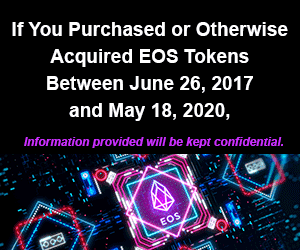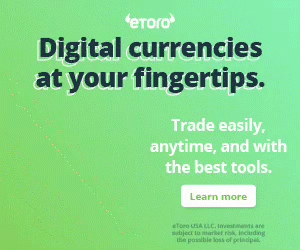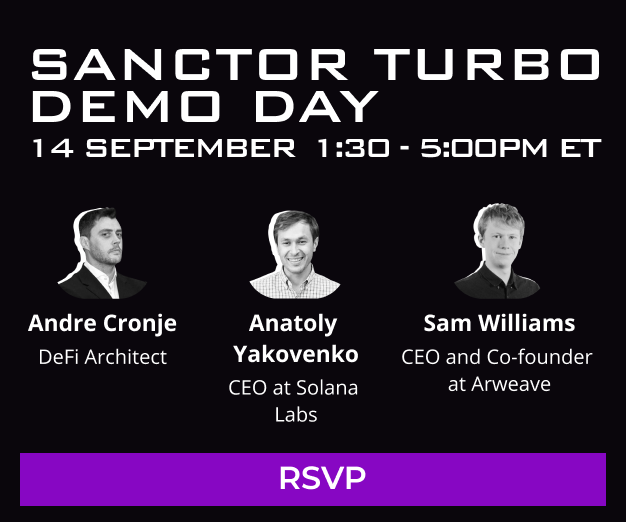
Key Takeaways
- Cosmos is one of the fastest-growing blockchain networks. Crypto Briefing interviewed Peng Zhong, who oversees the Tendermint team incubating the Cosmos ecosystem.
- Cosmos is currently moving toward connecting more blockchains with the IBC Protocol and deploying new dApps.
- Besides educating developers on Cosmos, Tendermint is focusing on leading projects like Gravity DEX and Emeris.
Crypto Briefing catches up with Tendermint CEO Peng Zhong, who oversees the core development team that built the critical components of the Cosmos blockchain.
Insights on the Cosmos Ecosystem
While Ethereum is currently the world’s most used blockchain, its widely-documented scalability issues have helped other networks surge in recent months. Cosmos is one of the networks to have seen increased adoption and market value. Its ecosystem has also seen rapid growth over the last few months.
Cosmos is a fast-growing network that describes itself as “the Internet of blockchains.” It is arguably one the most developed blockchains aside from Ethereum, currently securing more than $177 billion worth of digital assets.
The project’s roadmap dates back to 2015, long before most other leading blockchains on the market today had launched. It was developed by the software architects Jae Kwon and Ethan Buchman. Their idea was to enable the transfer of assets and information between blockchains that are isolated from one other.
Kwon and Buchman were the two founders of Tendermint, the core team responsible for developing the software architecture for what they described as an Internet of interoperable, application-specific blockchains. Over the next few years, Tendermint wrote the critical systems for the Cosmos network. They included the Cosmos consensus engine Tendermint Core and the software development kit (SDK), a framework for building application-specific blockchains.
In 2019, Tendermint launched their interoperable blockchain on mainnet working alongside a host of top contributors, including Althea, ChainSafe, Informal Systems, Interchain, Iqlusion, IRIS, Regen, and Sikka. However, it wasn’t until two years later that the network started to realize its goal of achieving cross-chain interoperability. In March 2021, Cosmos launched its biggest update to date: Inter-Blockchain Communication (IBC).
With IBC, Cosmos is fulfilling its vision of being “the Internet of blockchains” by authenticating cross-chain communication. Thanks to IBC, blockchains like Terra, Kava, Thorchain, Juno, and Secret Network, which all use the Cosmos SDK, can securely exchange tokens and data with one another.
To date, Cosmos has integrated 22 separate blockchains, with many more planned in the coming months. As the project expands its ecosystem of cross-chain interoperable networks, Tendermint continues to play a key role in the project’s development. One of Tendermint’s key figures is the Chief Executive Officer Peng Zhong. Crypto Briefing sat down with Zhong to learn more about the fast-expanding Cosmos ecosystem its major developments on the horizon.
Crypto Briefing: What have been the most notable developments in the Cosmos network to date?
Peng Zhong: We have been building the Cosmos network for a long time. The whitepaper was released in 2016, and development started the following year. However, the Cosmos Hub didn’t launch until 2019, and I would say that activity did not pick up until the launch of the IBC protocol on the Cosmos Hub in March 2021. A few months later, there are now 18 projects that support the IBC protocol, the latest being Terra. These are all projects with tens to hundreds of millions of dollars secured on their respective blockchains. After IBC, assets from all these chains can flow across each other seamlessly. Many other projects will be integrating IBC in the next few months. That should double the amount of IBC-connected blockchains from 18 to over 40.
CB: Given that so many contributors have come forward in the last few years, what is the Tendermint’s specific role in the Cosmos ecosystem?
PZ: We do everything from base-level infrastructure to building consumer-end applications for everyday use. You can compare us to Consensys, one of the largest companies in Ethereum, which also does all sorts of things for the blockchain. We lead engineering teams for some of the most promising dApps building on Cosmos like Gravity DEX, Emeris, and Starport. In addition to our core building strengths, we are focusing on marketing efforts. We are trying to bring as many developers as possible to the Cosmos ecosystem.
CB: Now that Terra has enabled IBC, what kind of synergy goes on between the network and Cosmos?
PZ: Terra’s recent integration of IBC has allowed Cosmos users to transact with Terra. In return, Terra dApps can use assets from a broader Cosmos ecosystem. You can go to Gravity DEX or Osmosis to exchange ATOM for LUNA or swap Cosmos tokens for UST stable coins. It’s a great way for Terra to acquire new users. The user base of Terra can use Cosmos infrastructure like wallets and so on.
CB: Binance and Crypto.com have both created their own Tendermint-based blockchains. How is Cosmos integrating with these large-scale crypto exchanges?
PZ: Binance runs a large blockchain built on the Cosmos SDK. It’s valuable, widely used and hosts BNB, one of the top crypto assets, along with hundreds of other assets. But Binance does their own thing. We would love them to upgrade the Binance Chain to support IBC. This would allow BNB to start flowing through Cosmos or Terra. But they have their priorities at play. As far as Crypto.com goes, they are heavily invested. Their exchange token Crypto.com coin is IBC-enabled and available with a Gravity DEX or Osmosis to trade. They are also developing their own EVM-compatible Cosmos blockchain called Cronos.
CB: Are there plans to implement the Inter-Blockchain communication (IBC) protocol outside Cosmos?
Peng Zhong: The development of IBC has always targeted blockchain agnosticism. For now, IBC implementation is meant for Cosmos SDK-based blockchains. But there are efforts to deploy IBC between Cosmos and Polkadot chains, between Cosmos and Avalanche chains, as well as integrating the protocol on Solana. It will certainly be compelling for other networks to access the value of all the other chains connected with IBC, which means tens of billions of dollars of liquidity.
CB: What are some of the most notable Cosmos-based projects Tendermint has incubated?
PZ: Some of our most important projects include Gravity DEX and Emeris—the first cross-chain token transfer interface for Cosmos. Gravity is similar to Uniswap. As a liquidity provider, you deposit two tokens and earn swap fees. Gravity V2, which is currently in development, will have multiple token pools, limit order features, and an interface that will display order books. The team has also planned a farming module to earn extra yield. Emeris is another important ecosystem component. Emeris is intended to be the portal to the Cosmos ecosystem and enables end-users to interact with Cosmos. The platform aggregates the various Cosmos dApps in one place.
CB: As Osmosis is currently the leading decentralized exchange on Cosmos, how would you compare it the Gravity DEX?
PZ: The Gravity DEX is secured by more than $10 billion on the Cosmos Hub, whereas Osmosis is secured by less than that—as much as ten times less. Everything on the Cosmos Hub goes through rigorous testing and audits as there is so much value at stake. Upgrades and new features take a long time. Gravity DEX was launched without farming incentives or multi-token pools. These features will only come into play toward the end of the year. As Osmosis can move faster, it already supports these features. But its security is arguably lower than the Cosmos Hub. There is healthy competition between the two, but they are not targeting the same market. They both do different things.
CB: One of the most notable developments of the year has been the NFT boom. What’s happening in the NFT niche on Cosmos?
PZ: There are many ongoing efforts when it comes to NFTs on Cosmos. There are NFTs on Terra’s Juno Project as well as many other blockchains on the network. There’s even a blockchain dedicated to NFTs. It’s called Pylons and was incubated at Tendermint. While it is still heavily in development, Pylons is expected to be the native NFT engine for Cosmos. The dApp essentially allows you to start building NFT marketplaces without requiring programming skills.
Disclosure: At the time of writing, the author of this feature owned ETH, SOL, and several other cryptocurrencies.


















